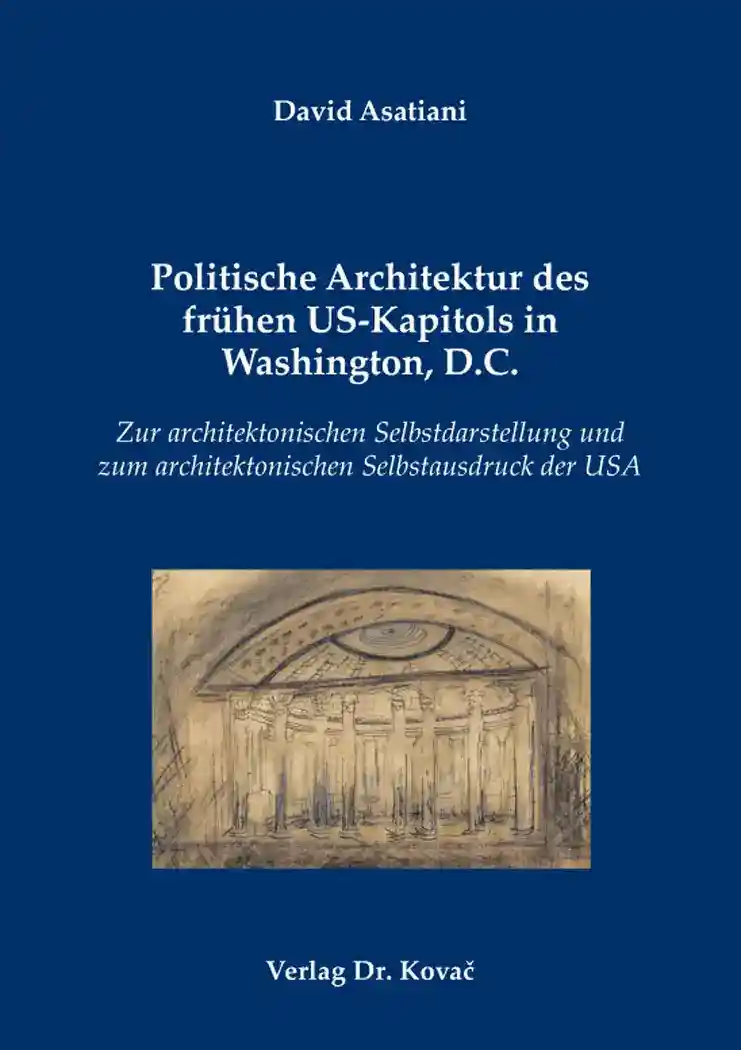David AsatianiPolitische Architektur des frühen US-Kapitols in Washington, D.C.
Zur architektonischen Selbstdarstellung und zum architektonischen Selbstausdruck der USA
EX ARCHITECTURA – Schriften zu Architektur, Städtebau und Baugeschichte, volume 19
Hamburg 2021, 488 pages
ISBN 978-3-339-12042-7 (print) |ISBN 978-3-339-12043-4 (eBook)
About this book deutschenglish
In research on political architecture (politische Architektur), it is a common practice to operate with the instrument of architectural self-representation (Selbstdarstellung). Parliament and government buildings have carried meaning, mostly right from their inception. Their architectural design deliberately displayed the political messages that were supposed to be deduced from this type of public buildings. Introducing the new scientific term of architectural self-expression (Selbstausdruck), David Asatiani semantically distinguishes it from architectural self-representation. Architectural self-expression characterizes the architectural design as being subordinated to a more or less unconscious, basic attitude of conduct, manners, and morals of society. By means of belvederes, viewing galleries, and stairs, architectural self-expression demonstrates the public accessibility of the edifices of colonial self-government in the North America, as well as of the early United States Capitol in Washington, D.C. Designing architectural structures with the citizen-oriented elements was far from being the result of theorizing about the relationship between democracy, parliament, and the public. In a political culture that owed its participation ethos to democratic townships of the colonies, it did not need to be justified.
A distinct and spectacular highlight of the expression of openness and proximity to the people in the political architecture of the USA was undoubtedly the United States Capitol rotunda. Documentary images, as well as simple and strikingly clear republican subjects of historical paintings in the rotunda, enabled perception, understanding and public appreciation. Even if the development of identity-forming strategies turned out to be a clearly elitist matter, and was often translated into self-referential relatedness by the elites, this does not lessen the public significance of this round hall. After all, the architectural design of public access to the east and west fronts of the United States Capitol became only realizable due to the very public context of the rotunda.
Keywords
Amerikanische RevolutionArchitekturgeschichteArchitektur und DemokratieBenjamin LatrobeHistorienmalereiIkonologieKulturwissenschaftKuppelParlamentsarchitekturPolitische ArchitekturRotundeSelbstdarstellungThomas JeffersonUS-KapitolUSAIhr Werk im Verlag Dr. Kovač

Möchten Sie Ihre wissenschaftliche Arbeit publizieren? Erfahren Sie mehr über unsere günstigen Konditionen und unseren Service für Autorinnen und Autoren.
